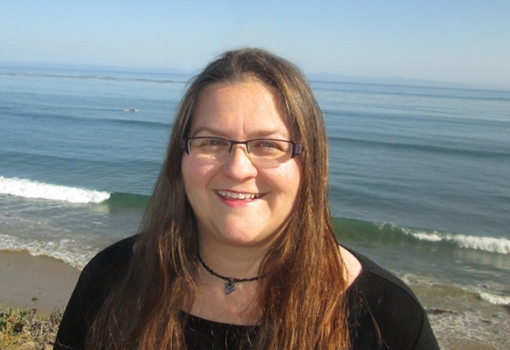Megan Valentine, a professor of mechanical engineering and co-director of the California NanoSystems Institute at UC Santa Barbara, has been awarded a $1.8 million collaborative grant by the National Science Foundation to design and create next-generation materials inspired and empowered by biological cells. Valentine will be working alongside a team of physicists, biologists and engineers, four of whom are women.
Led by Rae Robertson-Anderson, a professor of physics and biophysics at the University of San Diego, the team also includes Jennifer Ross at Syracuse University, Moumita Das at Rochester Institute of Technology, and Michael Rust at the University of Chicago.
The goal of the collaboration is to create self-directed, programmable and reconfigurable materials – using biological building blocks including proteins and cells – that are capable of producing force and motion. This research could pave the way for future materials applications ranging from self-propulsive materials to programmable micro-robotics, wound healing and dynamic prosthetics.
“This project offers an exciting opportunity to pair my group’s expertise in biomaterials and polymer mechanics with advances in synthetic biology to create classes of materials capable of autonomous sensing and actuation,” said Valentine, whose research group focuses on how forces are generated and transmitted in living materials, how these forces control cellular outcomes and how to capture the extraordinary features of living systems in manmade materials. By embedding bacterial cells capable of timed release of matrix modifying proteins, Valentine and collaborators will produce materials that can be programmed to achieve specific tasks. (See the NSF grant announcement.)
“Biological materials have unique abilities to adapt, respond and learn,” she said. “Through this project, we will develop a foundational understanding of how to design, generate and optimize materials that contain both biological and synthetic components capable of performing complex actions like lifting and crawling.”
“We are thrilled to be given the opportunity to pursue this line of research that has the power to really push the frontiers of materials research beyond the current state-of-the-art,” Robertson-Anderson said. “We will capitalize on the design principles of biological systems to engineer, investigate and make publicly available prototypical ‘biotic-abiotic materials’ that combine biological and commercial components to morph, move and do work without human intervention.”
The four-year grant will also allow for undergraduates at each partner university to gain hands-on collaborative research experience, mentoring and professional development opportunities. At the end of the project, the team will have built the framework for their materials design concept, including a small prototype, that can help others to advance futuristic materials to accomplish the many processes that living systems already perform seamlessly, such as healing and regulating themselves.

Mechanical engineering professor Megan Valentine.
